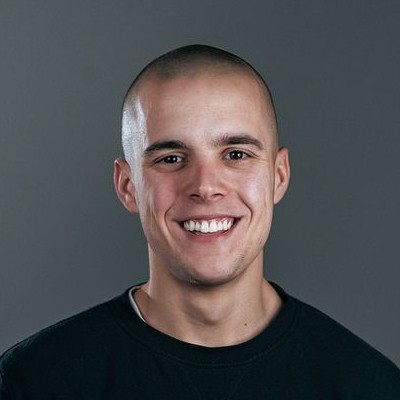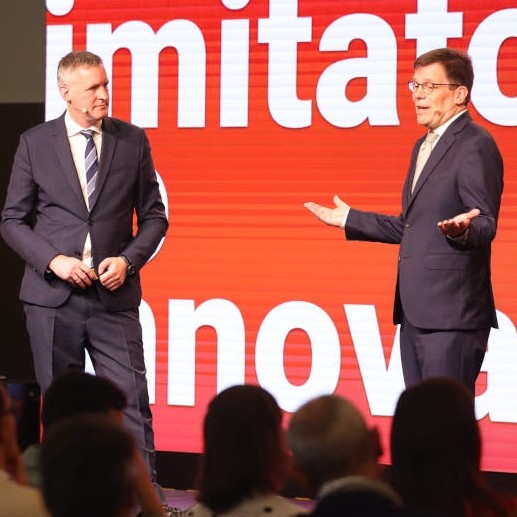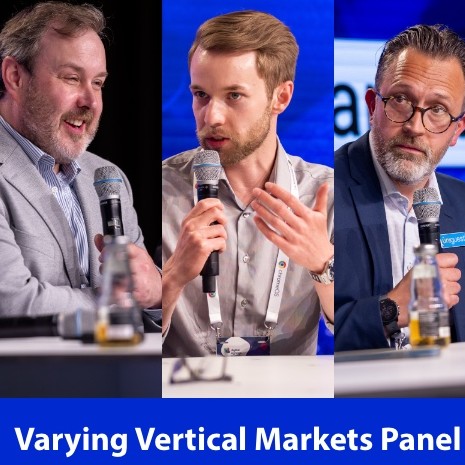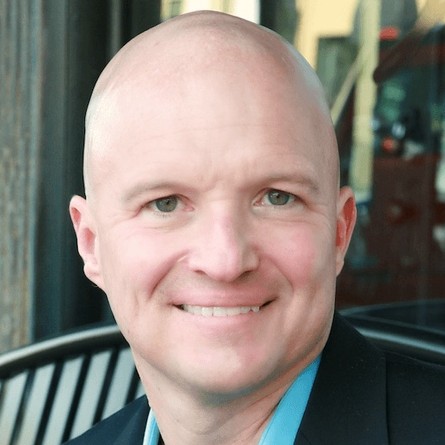Neil Longuet-Higgins, The LED Studio
Description
The 16:9 PODCAST IS SPONSORED BY SCREENFEED – DIGITAL SIGNAGE CONTENT
I was scrolling my way through my Linkedin feed recently when I stumbled across a post from a guy who said he was the inventor of the much-debated term digital signage, with a bio photo that showed him wielding a bottle of champagne that was about the size of a golf bag.
Clearly, I needed to speak with this guy.
So Neil Longuet-Higgins and I got on a podcast call the other day to talk about his claim to coining the term digital signage. Turns out he kind of adapted it from someone outside the industry, who was looking at a video wall, and didn't know what to call it.
He's been around pro AV and digital signage for some 30 years, so we talk about the early days and challenges. We also get more broadly into what he does - running sales for a company west of London called The LED Studio.
That company specs, designs, manufactures, rolls out and manages large format LED displays, including a new microLED video wall product that competes with the big boys of the display business.
Subscribe to this podcast: iTunes * Google Play * RSS
TRANSCRIPT
All right, Neil, thank you for joining me. We've not met, but I was intrigued by what I saw on your LinkedIn bio that I stumbled across. It said you're the guy who invented the term or coined the term, “digital signage.” So it was your fault?
Neil Longuet-Higgins: I'd like to think so. Some people might disagree. It was many years ago when I was running a video wall company in the UK and everybody used Barco monitors and electronic projection cubes, but no one was using them to advertise anything, and we ended up putting some small Barco monitor walls in 20 or 30 shopping centers in the UK, and we just called them video walls. There was no mystery to them. But then one day I had a phone call from a security guard who said, “Your digital sign is broken.” I said, what are you talking about? I think you've got the wrong number. He said, “No, your digital sign”, and I thought he was talking about neon or something, and then he went, “No, the one with all the pictures on it,” and I suddenly went oh, with the video screen? He said, yeah, and I actually thought about that after he'd made the call, I thought, “hmm, digital sign!”
So we started to promote it as Digital signage for advertising and the name stuck internally, and then some of the people, the suppliers would start to use it, and it just picked up from then, and I forgot about it for such a long time, and then eventually it came around and people would ask for digital signage, and so yeah, so a few people back in the day, remember it.
It's interesting because it's a term that has been debated, really since it started to gain any kind of common usage and people would say, “That's not the best thing, puts it in a narrow box. It should be called dynamic digital signage, or it should be place-based media or on-premise.” Just all these different things. I've forgotten all the different terminology that was being suggested.
Do you think it really matters as somebody who's been around it this long?
Neil Longuet-Higgins: I don't think it does, to be honest, but it does great when people use something I'm not familiar with, or they seem to dream a new thing up just for the sake of it.
The classic buzzword at the moment is direct view LED. All LEDs have been direct view from the very first one. You don't look at it far from a mirror or anything, and I think LG coined the phrase initially to differentiate internally between their LCD screens that were backlit by LED. But it seems to be something that's picked on now. I prefer the phrase TruLED but it's like different countries and regions have different ideas.
People will call an ordinary LED screen, a “video wall” when technically it's not. But people know what you mean. As long as people understand what you're talking about, that's fine.
Why do you prefer TruLED?
Neil Longuet-Higgins: I just think “direct view” describes nothing. It would be like saying your television at home is a direct view television.
Yeah, don't sneak up on it from the side.
Neil Longuet-Higgins: Yeah, it'll spot you these days and it'll already be recording you. That's probably for sure.
Yeah. It's interesting because LG would be one of those companies that caused the problem to begin with by marketing LED TVs when there were LCDs, but they had LED backlight arrays.
Neil Longuet-Higgins: Yeah, and I think we always try to call something new, with micro LED and mini LED. People will come up with different names for stuff to try and make it unique to them, and that's what the marketing of all products is about, to try and make something unique and get the buzzword out there.
How long have you been around “video walls” and digital signs generally?
Neil Longuet-Higgins: In the late 80s, early 90s, I was with a video company called Pro-Quip, and that ended up being one of the largest video wall companies in the world and through the 90s and got very big, and at the end of that company, we were looking at the beginning of the LED.
What I like about being in the business so long is seeing some of the people who initially worked with me as junior technicians and things, they're now senior people within the industry and also some of the designers and people I worked with, are now stalwarts of the industry and they've designed a lot of LED screens and things like that.
So the video wall network that you're putting in shopping malls that were for advertising?
Neil Longuet-Higgins: Yes, it was. It was called center network television, and it was a great idea, but the costs of it and the reliability, it was too far ahead of its time because we were recording things initially on a Phillips laser disc which was very expensive, about 1500 pounds back then to get a single disk, and then we moved onto the Sony CRV desks but they suffer from all the dust the bad environment of shopping centers and things, and even the original CLT Barco screen technology, you used to have to stick your hand in the back initially to color balance it. It was dangerous stuff!
And I'm glad the technology has moved on, but I think if we would've been able to have flat screens that were memory sticks back then. I think it would have really taken off, but it was the cost of doing it was hard.
So compared to today to do the same physical footprint of a video wall in that kind of environment, if you were doing it now, would it cost less than it did at that time or would it be a parity?
Neil Longuet-Higgins: It would cost less now, and one of the things was changing content. You could only afford to have a new laserdisc pressed once a month, and then you had to go around and physically change that content, and now we just take for granted that you'll just upload it via the cloud too, via whatever CMS system and that was just not even thought of back then.
And you had to cross your fingers that the laserdisc player was going to last, right?
Neil Longuet-Higgins: Yeah, they were forever falling over.
They would last what, like 3000 hours, maybe?
Neil Longuet-Higgins: If we were very very lucky.
Oh Lord. So you would have a tech out there, like every three months or something switching out a box?
Neil Longuet-Higgins: Yeah, I mean, you would try and be a little bit proactive on things and, remove them and clean them and et cetera. But the housings that were made were fairly basic, and whereas they had vents for keeping the monitors cool, all the rubbish would get sucked in there, and yeah, laserdisc was never going to be a format for long-term use.
So if you're thinking back to the late 90s, what were the technologies that you were praying would come along that would make your life easier?
Neil Longuet-Higgins: I think when it came to the conversion of someone's advert to put on to any format, we always wanted a digital video player and it did happen in that time, and I remember thinking, “I don't really understand this,” cause there's not a disc spinning around or videotape running along with, where's the image coming from? But it was early hard drives done by, I think it was Digital Video Systemswho developed one of the early ones. And, that was the first big step to moving forward.
And then I guess the next one would be well, really internet, but just high-speed connectivity so you could actually send a file out instead of driving it over?
Neil Longuet-Higgins: Absolutely. That's key as it is with all systems these days. You've got to have that network around you or that internet and with that, the world is your oyster really.
So you're now with a UK company called LED Studio running their sales?
Neil Longuet-Higgins: That's correct. LED Studio, we're celebrating our 10th year at the moment. It's one of the world's best-kept secrets. We are

























